Posted on July 19th, 2010 by ASEE
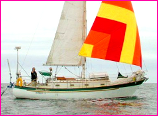 Students learn about sailboat design and how the shape of sails affects their movement. They apply what they learn about sailboat design to their math lesson, which involves the basic postulate of right triangle trigonometry and the Pythagorean Theorem. The lesson provides a fun, hands-on way to demonstrate that the Pythagorean Theorem can be tested and proved.
Students learn about sailboat design and how the shape of sails affects their movement. They apply what they learn about sailboat design to their math lesson, which involves the basic postulate of right triangle trigonometry and the Pythagorean Theorem. The lesson provides a fun, hands-on way to demonstrate that the Pythagorean Theorem can be tested and proved.
Read More
Filed under: Grades 9-12, Lesson Plans | Comments Off on Lesson: The Math of Sailboat Design
Tags: Geometry, Grades 9-12, Lesson Plan, Mathematics, Nautical Engineering
Posted on July 19th, 2010 by ASEE
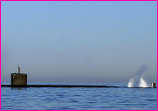 This lesson helps students understand how a submarine controls its buoyancy through the use of ballasts. Students construct a model ballast system, and then learn to control its vent valves to make it submerge and surface.
This lesson helps students understand how a submarine controls its buoyancy through the use of ballasts. Students construct a model ballast system, and then learn to control its vent valves to make it submerge and surface.
Read More
Filed under: Grades 6-8, Grades 9-12, Lesson Plans | 1 Comment »
Tags: Grade 7-12, Lesson Plan, Marine engineering, Nautical Engineering, Ocean, Underwater Robot
Posted on July 5th, 2010 by ASEE
 The egg drop is a fun and dramatic way to get students involved in engineering design. After a discussion of safety features, students experiment packaging an egg to produce a design that will allow it to fall from a considerable height without cracking.
The egg drop is a fun and dramatic way to get students involved in engineering design. After a discussion of safety features, students experiment packaging an egg to produce a design that will allow it to fall from a considerable height without cracking.
Read More
Filed under: Grades 6-8, Grades 9-12, Lesson Plans | 2 Comments »
Tags: Engineering Design, Grades 5-12, Lesson Plan, Packaging Engineering, Physical Science, Physics, Safety engineering
Posted on June 21st, 2010 by ASEE
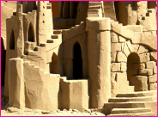 If you’re fortunate enough to live near a beach or sandy banks or dunes, this sand-castle construction lesson from the Great Sand Dunes National Park and Preserve will both instruct and entertain, helping your students understand the cohesive force of water tension and the adhesive force of capillary action.
If you’re fortunate enough to live near a beach or sandy banks or dunes, this sand-castle construction lesson from the Great Sand Dunes National Park and Preserve will both instruct and entertain, helping your students understand the cohesive force of water tension and the adhesive force of capillary action.
Read More
Filed under: Grades 6-8, Grades 6-8, Grades K-5, Grades K-5, K-12 Outreach Programs, Lesson Plans | 1 Comment »
Tags: capillary action, Chemical Engineering, erosion, Grades 3-8, Great Sand Dunes National Park, Lesson Plan, sand and water, Water
Posted on June 10th, 2010 by ASEE
 Students grades 4-12 conduct a simple experiment that demonstrates how a familiar chemical — liquid soap — can be used to break the surface tension of water and propel a toy boat. Older students move into further inquiry of chemical dispersants and their use in combating oil spills.
Students grades 4-12 conduct a simple experiment that demonstrates how a familiar chemical — liquid soap — can be used to break the surface tension of water and propel a toy boat. Older students move into further inquiry of chemical dispersants and their use in combating oil spills.
Read More
Filed under: Class Activities, Grades 6-8, Grades 9-12, Grades K-5 | 1 Comment »
Tags: Chemistry, Grades 4-12, Lesson Plan
Posted on June 7th, 2010 by ASEE
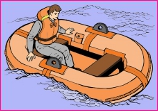 Do your students have what it takes to survive and be rescued? In this activity from Boston’s Museum of Science, student teams practice the design skills of engineers as they create survival tools from a crate of supplied materials. They learn about teamwork, brainstorming, innovation, and creative material reuse in attempting to create a protective shelter, a method for gathering food, and a signal for help. The teams test their designs for feasibility before having a design review with the rest of the class.
Do your students have what it takes to survive and be rescued? In this activity from Boston’s Museum of Science, student teams practice the design skills of engineers as they create survival tools from a crate of supplied materials. They learn about teamwork, brainstorming, innovation, and creative material reuse in attempting to create a protective shelter, a method for gathering food, and a signal for help. The teams test their designs for feasibility before having a design review with the rest of the class.
Read More
Filed under: Class Activities, Grades 6-8, Grades K-5 | 2 Comments »
Tags: Engineering Design Process, Grades 4-10, Lesson Plan
Posted on May 17th, 2010 by Jaimie Schock
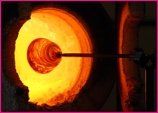 In this activity, elementary and middle school students learn about glass and the techniques for making it, especially glass blowing. Then, students experiment with honey to get a feel for how glass is blown, and butter, to learn how temperature changes affect a material.
In this activity, elementary and middle school students learn about glass and the techniques for making it, especially glass blowing. Then, students experiment with honey to get a feel for how glass is blown, and butter, to learn how temperature changes affect a material.
Read More
Filed under: Class Activities, Grades 6-8, Grades K-5 | Comments Off on Activity: Glass Blowing Simulation
Tags: Glass, Glass engineering, Lesson Plan
Posted on May 3rd, 2010 by ASEE
 Using a plasma ball or lightning globe, students in grades 3-5 test various objects to see if they pull the electric current generated by the globe to them. Students then explore how the globe excited electrons inside the fluorescent bulbs to make them light.
Using a plasma ball or lightning globe, students in grades 3-5 test various objects to see if they pull the electric current generated by the globe to them. Students then explore how the globe excited electrons inside the fluorescent bulbs to make them light.
Read More
Filed under: Class Activities, Grades K-5, Grades K-5, Lesson Plans | Comments Off on Lesson Plan: Plasma Globes and Electricity
Tags: Class Activities, Curriculum, Grades 3-5, Lesson Plan, Plasma Physics
Posted on April 19th, 2010 by ASEE
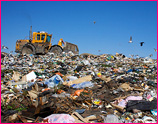 What happens to garbage? In this lesson, students grades 9-12 derive the answer by building their own landfill. While observing how household waste can leach into soil and groundwater, they also learn the importance of well supervised, sanitary disposal sites.
What happens to garbage? In this lesson, students grades 9-12 derive the answer by building their own landfill. While observing how household waste can leach into soil and groundwater, they also learn the importance of well supervised, sanitary disposal sites.
Read More
Filed under: Grades 9-12, Lesson Plans | 2 Comments »
Tags: Clean Water, Environmental Engineering, Environmental Protection Agency, Environmental science, Grades 9-12, Lesson Plan, Waste management
 Students learn about sailboat design and how the shape of sails affects their movement. They apply what they learn about sailboat design to their math lesson, which involves the basic postulate of right triangle trigonometry and the Pythagorean Theorem. The lesson provides a fun, hands-on way to demonstrate that the Pythagorean Theorem can be tested and proved.
Students learn about sailboat design and how the shape of sails affects their movement. They apply what they learn about sailboat design to their math lesson, which involves the basic postulate of right triangle trigonometry and the Pythagorean Theorem. The lesson provides a fun, hands-on way to demonstrate that the Pythagorean Theorem can be tested and proved. 








 This lesson helps students understand how a submarine controls its buoyancy through the use of ballasts. Students construct a model ballast system, and then learn to control its vent valves to make it submerge and surface.
This lesson helps students understand how a submarine controls its buoyancy through the use of ballasts. Students construct a model ballast system, and then learn to control its vent valves to make it submerge and surface. The egg drop is a fun and dramatic way to get students involved in engineering design. After a discussion of safety features, students experiment packaging an egg to produce a design that will allow it to fall from a considerable height without cracking.
The egg drop is a fun and dramatic way to get students involved in engineering design. After a discussion of safety features, students experiment packaging an egg to produce a design that will allow it to fall from a considerable height without cracking. If you’re fortunate enough to live near a beach or sandy banks or dunes, this sand-castle construction lesson from the Great Sand Dunes National Park and Preserve will both instruct and entertain, helping your students understand the cohesive force of water tension and the adhesive force of capillary action.
If you’re fortunate enough to live near a beach or sandy banks or dunes, this sand-castle construction lesson from the Great Sand Dunes National Park and Preserve will both instruct and entertain, helping your students understand the cohesive force of water tension and the adhesive force of capillary action. Students grades 4-12 conduct a simple experiment that demonstrates how a familiar chemical — liquid soap — can be used to break the surface tension of water and propel a toy boat. Older students move into further inquiry of chemical dispersants and their use in combating oil spills.
Students grades 4-12 conduct a simple experiment that demonstrates how a familiar chemical — liquid soap — can be used to break the surface tension of water and propel a toy boat. Older students move into further inquiry of chemical dispersants and their use in combating oil spills. Do your students have what it takes to survive and be rescued? In this activity from Boston’s Museum of Science, student teams practice the design skills of engineers as they create survival tools from a crate of supplied materials. They learn about teamwork, brainstorming, innovation, and creative material reuse in attempting to create a protective shelter, a method for gathering food, and a signal for help. The teams test their designs for feasibility before having a design review with the rest of the class.
Do your students have what it takes to survive and be rescued? In this activity from Boston’s Museum of Science, student teams practice the design skills of engineers as they create survival tools from a crate of supplied materials. They learn about teamwork, brainstorming, innovation, and creative material reuse in attempting to create a protective shelter, a method for gathering food, and a signal for help. The teams test their designs for feasibility before having a design review with the rest of the class. In this activity, elementary and middle school students learn about glass and the techniques for making it, especially glass blowing. Then, students experiment with honey to get a feel for how glass is blown, and butter, to learn how temperature changes affect a material.
In this activity, elementary and middle school students learn about glass and the techniques for making it, especially glass blowing. Then, students experiment with honey to get a feel for how glass is blown, and butter, to learn how temperature changes affect a material. Using a plasma ball or lightning globe, students in grades 3-5 test various objects to see if they pull the electric current generated by the globe to them. Students then explore how the globe excited electrons inside the fluorescent bulbs to make them light.
Using a plasma ball or lightning globe, students in grades 3-5 test various objects to see if they pull the electric current generated by the globe to them. Students then explore how the globe excited electrons inside the fluorescent bulbs to make them light. What happens to garbage? In this lesson, students grades 9-12 derive the answer by building their own landfill. While observing how household waste can leach into soil and groundwater, they also learn the importance of well supervised, sanitary disposal sites.
What happens to garbage? In this lesson, students grades 9-12 derive the answer by building their own landfill. While observing how household waste can leach into soil and groundwater, they also learn the importance of well supervised, sanitary disposal sites.